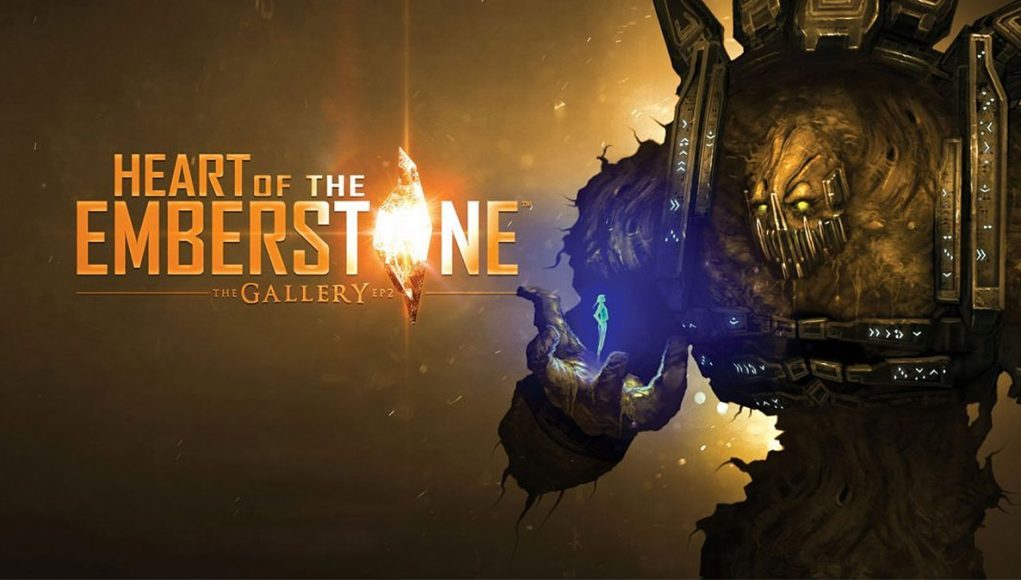The Gallery – Episode 2: Heart of the Emberstone (2017) comes a year and a half after Call of the Starseed (2016), episode one in the narrative-based adventure puzzle game series. As a successor to one of the first room-scale games in existence, the second episode takes you deeper into the ’80s fiction-inspired universe and flushes out what proves to be a story as rich as the cinematic direction teased in the first. Far from being a one hit wonder, the second episode improves on the experience of the first in almost every way.
The Gallery – Episode 2: Heart of the Emberstone Details:
Developer: Cloudhead Games
Available On: Oculus, Steam, Viveport
Reviewed On: Oculus Rift [Amazon]
Release Date: October 18, 2017
Gameplay
Leaving off from the end of Call of the Starseed, you find yourself on the other side of the universe, searching for your adventuresome sister Elsie as you follow her footsteps onto a strange alien world. At the behest of a hunchbacked overlord, you’re told you must “fetch your grasp,” a powerful addition to your telekenetically-powered gauntlet in order to see your sister again. With the ability to move heavy objects imbibed with a magical power ore, you journey ever further into the deserted world as you become both actor and observer of a story long passed.

Without saying too much about the story itself, much of the action takes place in the form of holographic memories projected in front of you, and through found tapes and diary entries. The world you’ve landed on is essentially dead, except for weird little weevil-things that seem to thrive on the sandy planet. Just how it got that way is something for you to find out yourself. I will say though that the story offers salient commentary on the opposing forces of nature and man, and leaves a lot to digest as you delve deeper into the crazy power differential that results from a monarchy that’s both in charge of an entire world’s resources and is ultimately gifted with superhuman powers to maintain that order.
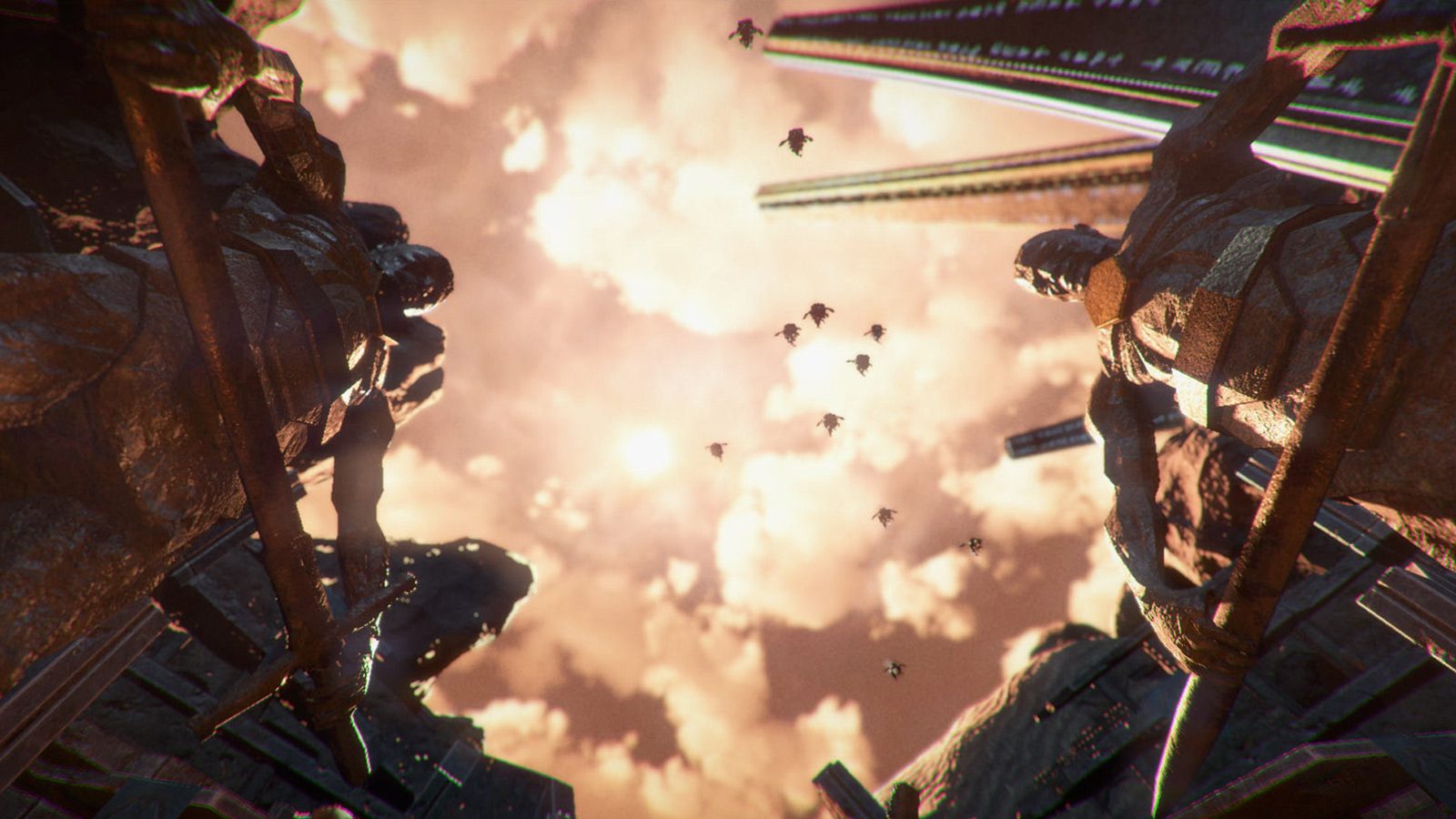
Spanning across three main areas, you’ll do some back-and-forth to get missing parts, so while the world itself isn’t giant, it also means there isn’t any wasted space. At first I wished there was more latitude for open exploration, but what I was left with was a situation where a new puzzle and a fresh storyline breadcrumb always in reach to kept me interested. This also kept it from feeling too linear, departing from what I like to call ‘IKEA adventures’.
Besides a single puzzle that’s basically a more complicated version of Simon (repeat a sequence of color-coded tones), the puzzles in Heart of the Emberstone left me feeling like I’d never experienced something similar.
Most doors and certain quest items are accessed by guiding your gauntlet’s stone through a translucent tube with moving barriers, that when you fail to guide it correctly and touch the barrier or edges of the tube, it resets everything. These range from extremely simple—a straight tube with no barriers for commonly-accessed spaces like elevators—to increasingly difficult puzzles as you move along.
[gfycat data_id=”YellowHarshGalapagostortoise”]
You also have your gauntlet, a more powerful ‘grasp’, and an energy slingshot that helps you shoot down room-unlocking ore boxes. These boxes can be slotted into place and used as movable parts in larger room-sized puzzles.
One of my favorites was the gear puzzles, where you have to slot in the right gears within a certain amount of time in order to use a door-opening lever. The little gears have differently-shaped axle inserts, so you have to plan ahead so you can get them all in correctly before the timer runs out, or you have to start over again.
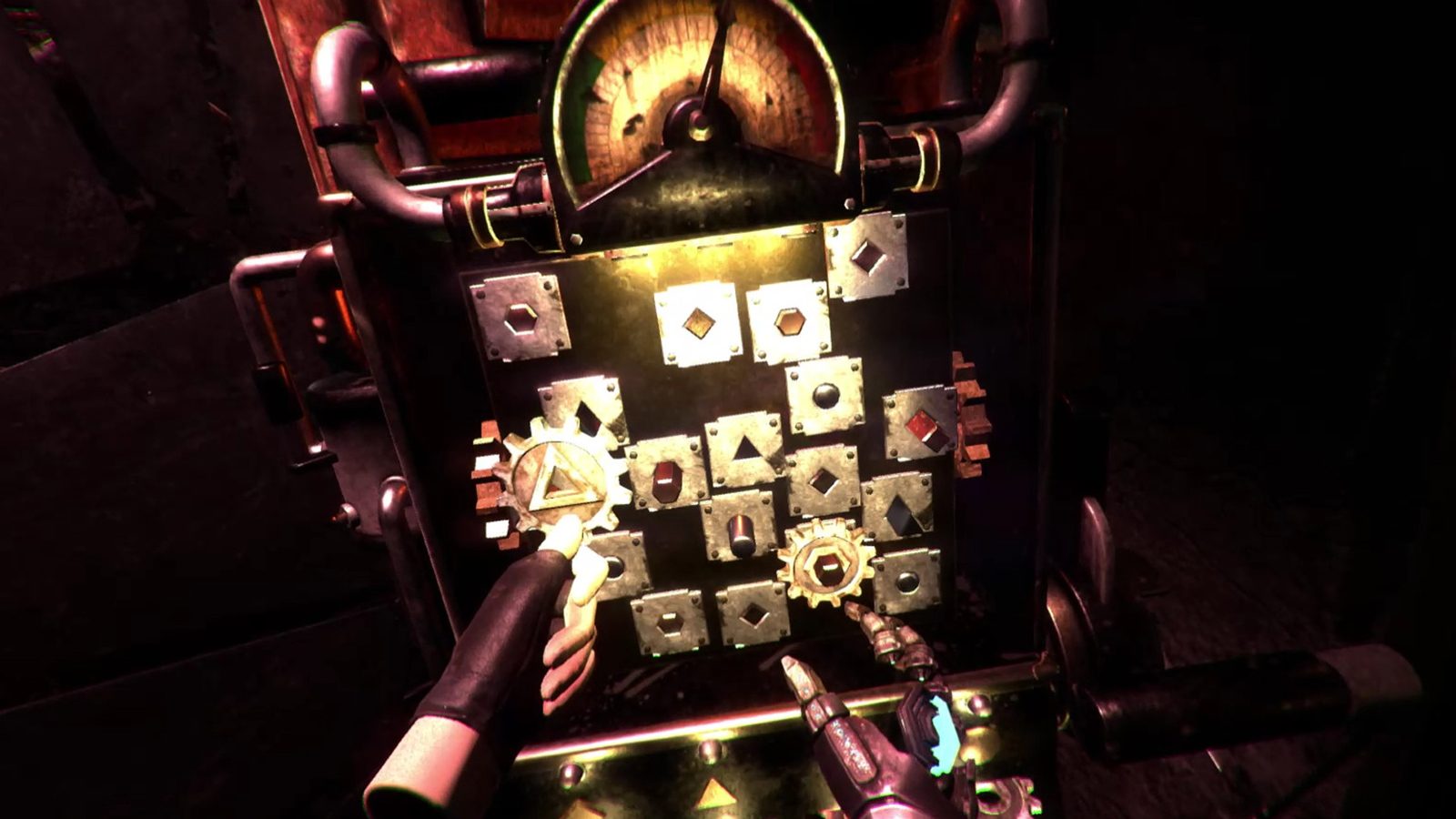
While neither of these puzzle types are particularly difficult, the feeling you get when you solve them is synergistic. The developers could have easily made you press a simple button to open a door, or scattered keys throughout the level and make you go on an endless hunt, but the door puzzles not only leave you feeling like you’ve accomplished something, but you’ve done it with style.
I know you’re scanning for it, so here it is. Heart of the Emberstone took me 3.5 hours to complete. There, I even put it in bold. I achieved this playtime reading every book I found, every scrap of paper, and listened to every one of Elsie’s cassette tapes. While I’m not sure how the creators can claim as far as 6 hours of playtime, to its ultimate credit Episode 2 isn’t littered with useless collectibles that would otherwise pad out the game’s length. Most everything you find broadens the story’s lore, leaving you with multiple ways to understand what’s going on.
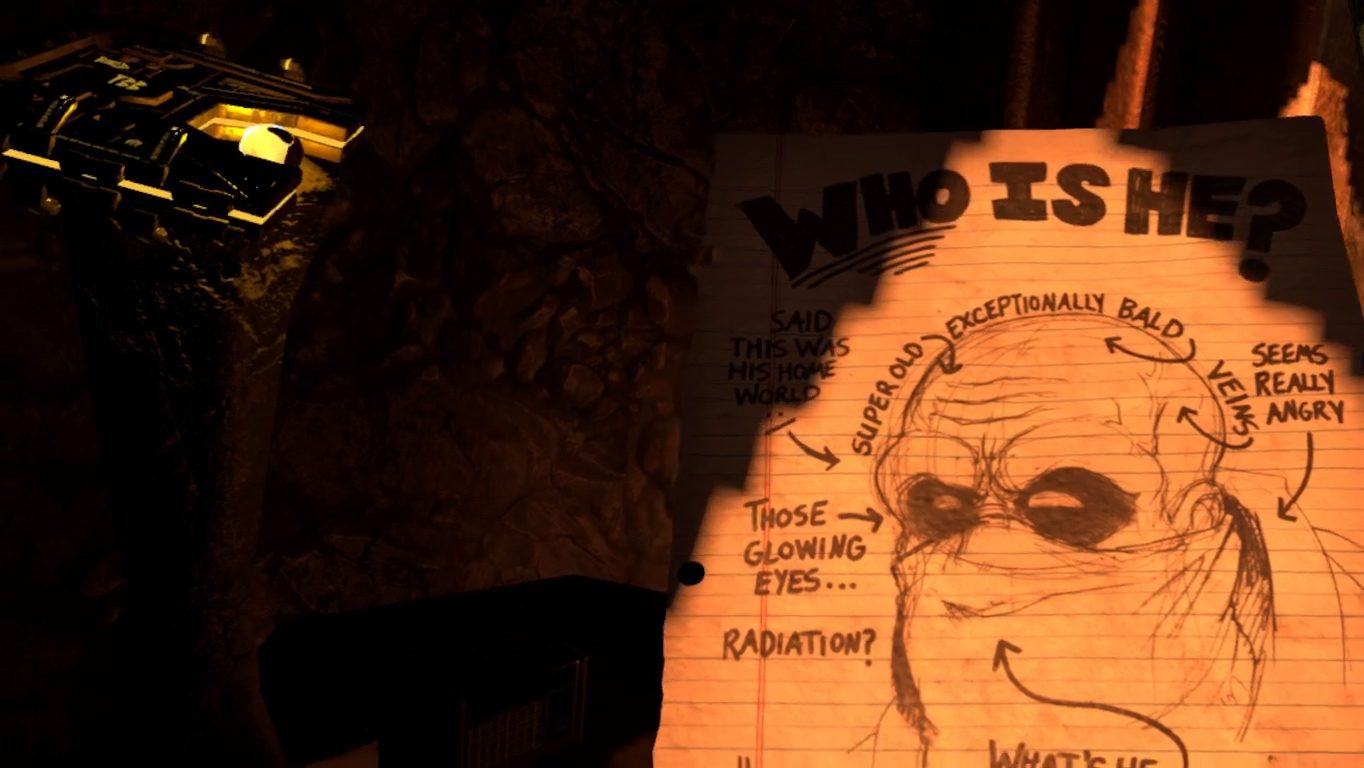
Frankly, after the end credits rolled, I was ready to play again. There’s so much to unpack in Heart of the Emberstone, so much more to absorb than a single pass would allow. Although I knew what was going on and never felt confused by the events that unfolded before me as an observer, I’d place the level of storytelling on the same rung as some of the top TV dramas like Breaking Bad and Game of Thrones—the sort of shows you go back to rewatch even if you know what’s going to happen (albeit in a reduced form).
It’s pretty rare that excellent voice acting, competent art direction, and a fully-realized world with a truly interesting story come together at once, so excuse me if I let out a well-deserved “wow.”
Immersion
Comparing the sequel to the first in the series, Heart of the Emberstone feels much more like a complete experience than its predecessor. You can probably chalk this up to the fact that it’s over three-times the length of the first episode, all with about the same density of puzzles and indispensable narrative elements.
Where Call of the Starseed seemed somewhat gimmicky at times and jabbed you in the face every so often with reminders that you were actually in a game and not in a real adventure, Heart of the Emberstone tosses you in a wholly new alien environment where expectations are less primed by real-world interactions, but where your actions have greater overall effect. Once you figure out how to use your gauntlet, puzzles and abilities are thrown on at formative intervals that never leave you scratching your head as what to do next. This doesn’t mean you’re led by the hand though, as the game only tells you how to do something once without nagging you to death with the usual (and frankly way overused) ‘helpful robot’ trope.
Bad storytelling is bad for immersion. Bad stories and crappy voice acting make you feel like you’re in a fake world with fake people, and this is why I tend to discuss it in both the gameplay and immersion sections of reviews. Besides being an obvious visual treat, the world feels alive even though it’s ostensibly dry as a dead dingo’s donger. Grounding you in the world further, the story shows an emotional range that doesn’t reek of the low-rent melodrama of more mediocre titles. Heart-wrenching scenes of betrayal punctuate the bubbly levity that Elsie always seems to bring to every situation.
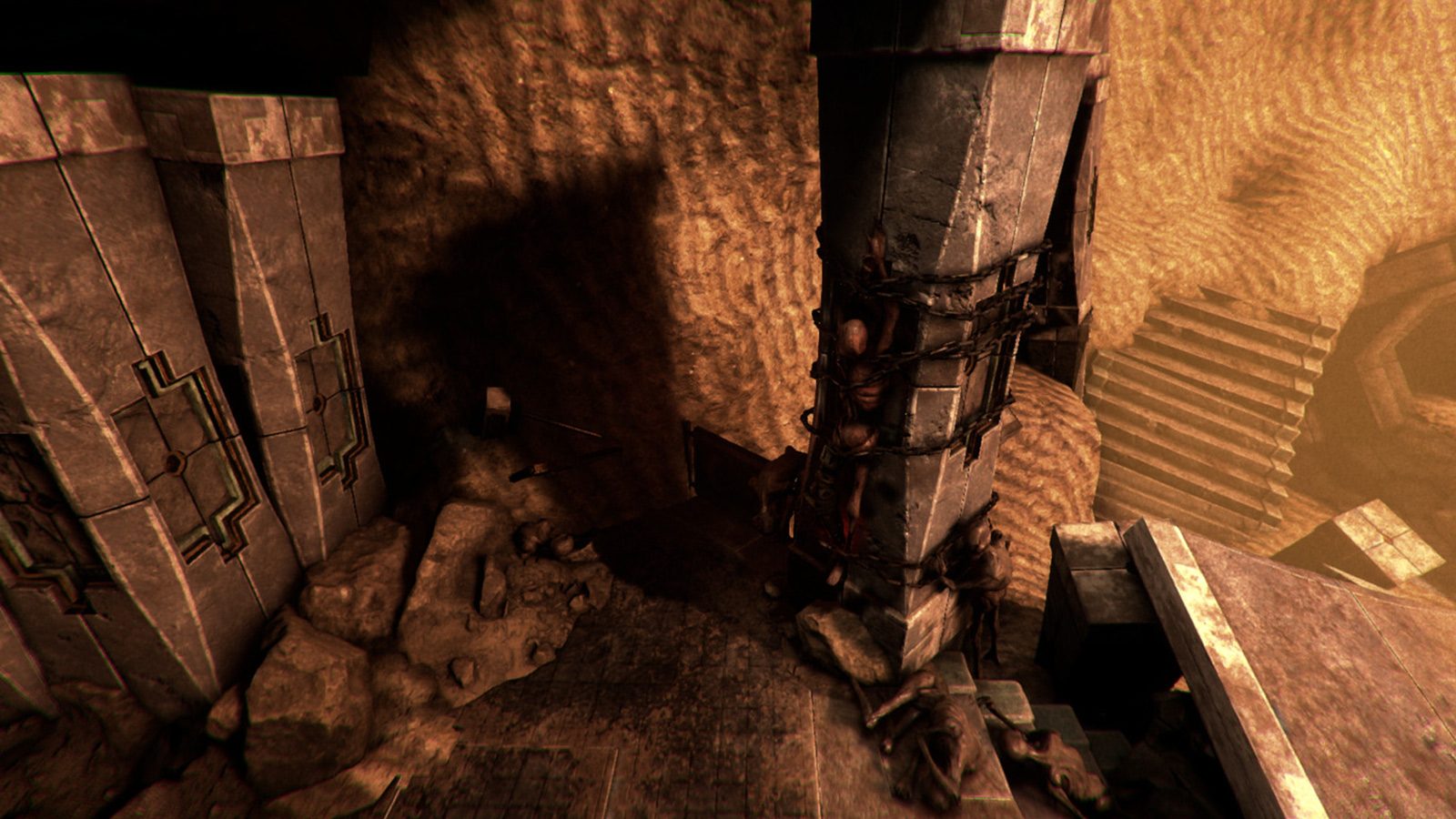
There are of course moments when the devs give you a little ‘wink wink, nudge nudge’, as if to say “we’ve put this story element here conveniently to move things along, but we know you know that.” This is done maybe once or twice throughout the game though, and isn’t really a focal point.
Nuts and bolts-wise, object interaction is vastly improved, showing just how much Cloudhead has worked to create objects that give a solid haptic feedback and work equally well in both left and right hands. Picking up and reading the holographic logs scattered throughout the game was a much more plausible experience than the notepads or books in Starseed which only gave you a few ‘snap-to’ hand poses. Menus, maps, and logs take the place of your hand, leaving hand poses out of the equation entirely.
I found the hand models to be a bit of a minor visual blemish, which felt overly spindly. The position of the hands relative to the controller also felt a bit off, extending farther than my hands naturally would. Like its predecessor, hand models don’t make full use of Oculus Touch’s capacitive buttons, robbing you of some of the more true-to-life flexibility the particular controller can afford. This clearly isn’t an issue on Vive, which is why is only bears brief mention.
Loading screens are fairly quick and unobtrusive, but are numerous as you traverse back and forth on the world map—a clear, but decidedly unavoidable pain point.
Comfort
There are a number of elements that made their way from Call of the Starseed to Heart of the Emberstone, including blink teleportation. One thing that’s changed however is the inclusion of smooth locomotion (put in bold for skimmers) that should have die-hard opponents of teleportation squealing with glee. This however doesn’t include smooth yaw stick turning, meaning you’ll have to weather the game with snap-turn only—aka ‘comfort mode’.
Smooth locomotion options also include controller-oriented stick-move, head-oriented stick move, strafing options and variable movement speeds. Since these are non-default options that must be toggled by the user, the stock blink teleportation makes for an exceedingly comfortable experience for anyone, from novice to expert VR user.
One of the few misgivings I have with Heart of the Emberstone is the lack of seated option, which would be welcome when playing the game from start to finish.
 We partnered with AVA Direct to create the Exemplar 2 Ultimate, our high-end VR hardware reference point against which we perform our tests and reviews. Exemplar 2 is designed to push virtual reality experiences above and beyond what’s possible with systems built to lesser recommended VR specifications.
We partnered with AVA Direct to create the Exemplar 2 Ultimate, our high-end VR hardware reference point against which we perform our tests and reviews. Exemplar 2 is designed to push virtual reality experiences above and beyond what’s possible with systems built to lesser recommended VR specifications.

